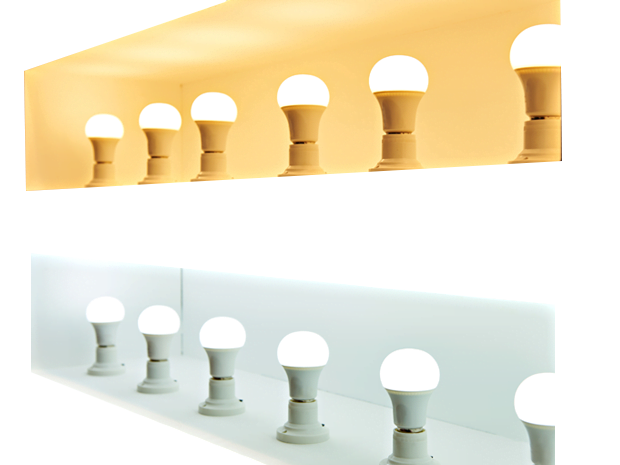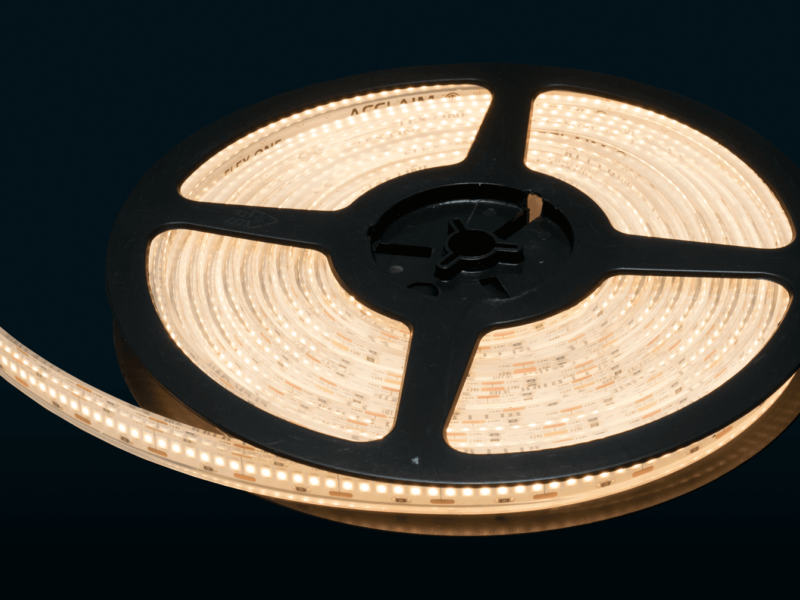 Free UK Delivery On Orders Over £120*
Free UK Delivery On Orders Over £120*
 Free UK Delivery On Orders Over £120*
Free UK Delivery On Orders Over £120*
 Secure Ordering
Secure Ordering
 Up To 5 Year Warranty
Up To 5 Year Warranty
 5* Service & Support
5* Service & Support
What is LED colour temperature?
LED colour temperature is a measure of the hue of a particular type of light, and is expressed in degrees Kelvin (K). It refers to the temperature of a theoretical black body radiator that has the same hue as the light source, with lower colour temperatures appearing warmer (more orange or yellow) and higher colour temperatures appearing cooler (more blue).
A common way to understand LED colour temperature is to use the metaphor of a hot stove. When a stove is cold, it appears blue, and as it heats up, it turns orange and eventually red. Similarly, LED lighting with a lower colour temperature appears warmer (more orange or yellow), while LED lighting with a higher colour temperature appears cooler (more blue).

Typical LED colour temperatures range from 2700K to 6500K, with some products going even higher or lower. Here is a general breakdown of the different colour temperature ranges:
2700K-3000K: Warm white or soft white, similar to traditional incandescent bulbs
3500K-4100K: Neutral white, similar to daylight at dawn or dusk
5000K-6500K: Cool white or daylight, similar to natural sunlight
It is important to note that LED colour temperature is not a measure of the intensity or brightness of a light source, but rather the hue of the light.

What is LED colour rendering index (CRI)?
The LED colour rendering index (CRI) is a measure of how accurately a light source renders colours compared to natural sunlight. It is expressed on a scale from 0 to 100, with higher numbers indicating better colour rendering.
In other words, a light source with a high CRI will make colours appear more vibrant and true to life, while a light source with a low CRI will tend to wash out colours or make them appear distorted.
CRI is particularly important for tasks that require accurate colour perception, such as reading, writing, and working with colours. It is also important for retail and display applications, where it is important to showcase products in their true colours.
How is LED colour temperature and CRI measured?
LED colour temperature and CRI are measured using standardised tests and protocols.
For colour temperature, the correlated colour temperature (CCT) is used as a measure of the perceived colour of a light source. It is based on the temperature of a theoretical black body radiator that has the same hue as the light source.
For CRI, the International Commission on Illumination (CIE) has developed a standardised test called the CIE Ra scale, which measures the ability of a light source to accurately render colours across a range of wavelengths. The CRI is calculated using the CIE Ra scale, with higher values indicating better colour rendering.

How does LED colour temperature and CRI impact the quality and appearance of light?
LED colour temperature and CRI can have a significant impact on the quality and appearance of light in a space. Here are some key considerations:
LED colour temperature: Choosing the right LED colour temperature can help to create the right atmosphere and ambiance in a space. For example, warm white or soft white LED lighting (2700K-3000K) can create a cozy and inviting atmosphere, while cool white or daylight LED lighting (5000K-6500K) can create a bright and energising atmosphere. It is important to choose the right colour temperature for the intended purpose of the space.
LED CRI: High CRI LED lighting can help to improve the appearance of colours and make them appear more vibrant and true to life. This is particularly important for tasks that require accurate colour perception, such as reading, writing, and working with colours. It is also important for retail and display applications, where it is important to showcase products in their true colours.
Combining colour temperature and CRI: It is also important to consider the combination of colour temperature and CRI when selecting LED lighting. For example, a light source with a high CRI and a warm colour temperature (2700K-3000K) may create a cozy and inviting atmosphere, while a light source with a high CRI and a cool colour temperature (5000K-6500K) may create a bright and energising atmosphere.
Conclusion
In conclusion, LED colour temperature and CRI are important factors to consider when selecting LED lighting for a space. They can impact the quality and appearance of light and should be chosen based on the intended purpose and atmosphere of the space.
Contact Us
Contact Us Today to Find Out More

